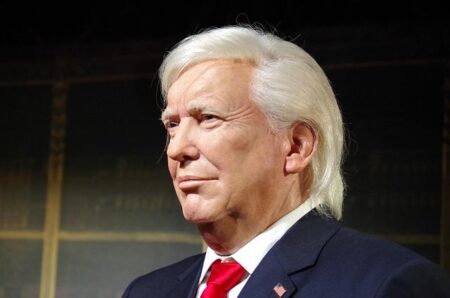TOKYO – In a notable shift in diplomatic dynamics, Japan’s new leader is turning a recent spat with China into a strategic advantage. As tensions simmer between the two regional powers, the Japanese government is leveraging the dispute to consolidate domestic support and redefine its foreign policy stance. This development signals a potential recalibration of Japan’s approach to China, with implications for regional security and international relations.
Spat With China Strengthens Japan’s Strategic Position in Asia
Recent tensions in the East China Sea, sparked by disputes over territorial claims, have inadvertently consolidated Japan’s diplomatic and military resolve under its new leadership. By adopting a firmer stance, Tokyo has not only reinforced its commitment to defending its sovereignty but has also garnered increased support from key regional allies such as South Korea, Australia, and India. This realignment is reshaping the Asian geopolitical landscape, positioning Japan as a pivotal player capable of counterbalancing China’s expanding influence.
Key developments contributing to Japan’s strategic enhancement include:
- Strengthened defense partnerships within the Quad alliance.
- Increased joint military exercises showcasing readiness and cooperation.
- Expanded economic collaborations aimed at reducing dependence on China.
- Enhanced cybersecurity initiatives to protect critical infrastructure.
| Factor | Impact on Japan’s Strategy |
|---|---|
| Territorial Assertiveness | Bolsters national unity and deterrence |
| Alliance Reinforcement | Enhances regional security cooperation |
| Economic Diversification | Reduces reliance on China-centric trade |
| Technological Innovation | Supports modernized defense capabilities |
Leveraging Tensions to Bolster Economic and Security Alliances
Japan’s current administration has notably turned recent diplomatic frictions with China into a strategic advantage, seeking to deepen its bonds with key allies across the Indo-Pacific region. Instead of viewing tensions purely as obstacles, Japan’s leadership is capitalizing on shared concerns about regional stability to invigorate economic cooperation and security dialogues with countries like the United States, Australia, and India. By doing so, Tokyo is reinforcing multilateral frameworks that promote free trade and collective defense, signifying a shift towards a more proactive and alliance-centered foreign policy.
The subtle recalibration of Japan’s approach is evident through enhanced joint military exercises, trade deals, and infrastructure investments aimed at counterbalancing China’s growing influence. Initiatives such as supply chain diversification and collaborative technology development are designed to reduce dependency on any single actor and bolster resilience. Below is a snapshot of Japan’s strategic partnership dynamics since the recent diplomatic upswing:
| Partner | Key Focus Areas | Recent Developments |
|---|---|---|
| United States | Security cooperation, Trade | Expanded naval exercises, Semiconductor alliance |
| Australia | Infrastructure, Defense tech | Joint investments in green energy, Cybersecurity pact |
| India | Maritime security, Economic partnership | Enhanced Indo-Pacific strategy coordination, Trade talks advanced |
Policy Recommendations for Navigating Sino-Japanese Relations in a Changing Geopolitical Landscape
Maintaining a calibrated approach toward Beijing is crucial as Tokyo seeks to leverage its recent diplomatic tensions into strategic advantages. Japan must prioritize strengthening multilateral ties within the Indo-Pacific region, fostering partnerships that reinforce economic and security frameworks without directly provoking China. This includes expanding cooperation with ASEAN nations, Australia, and India to create a more balanced regional order. Equally important is enhancing Japan’s technological self-reliance while remaining committed to global supply chain resilience-a delicate balance between autonomy and collaboration.
Policy formation should also consider robust communication channels to avoid unnecessary escalations, combined with a firm stance on sovereignty and maritime rights. Below is a simple framework illustrating key policy priorities:
| Policy Area | Strategic Focus | Expected Outcome |
|---|---|---|
| Economic Partnerships | Diversification beyond China | Reduced dependency, increased resilience |
| Security Cooperation | Regional joint exercises and intelligence sharing | Stronger deterrence, enhanced regional stability |
| Diplomatic Engagement | Regular dialogue channels with Chinese counterparts | Conflict mitigation, clearer communication |
To Wrap It Up
As Japan’s new leadership navigates a complex geopolitical landscape, the recent spat with China has unexpectedly emerged as a strategic asset, reinforcing Tokyo’s resolve and reshaping regional dynamics. How this tension will influence Japan’s foreign policy and its relations with neighboring powers remains a critical development to watch in the months ahead.




